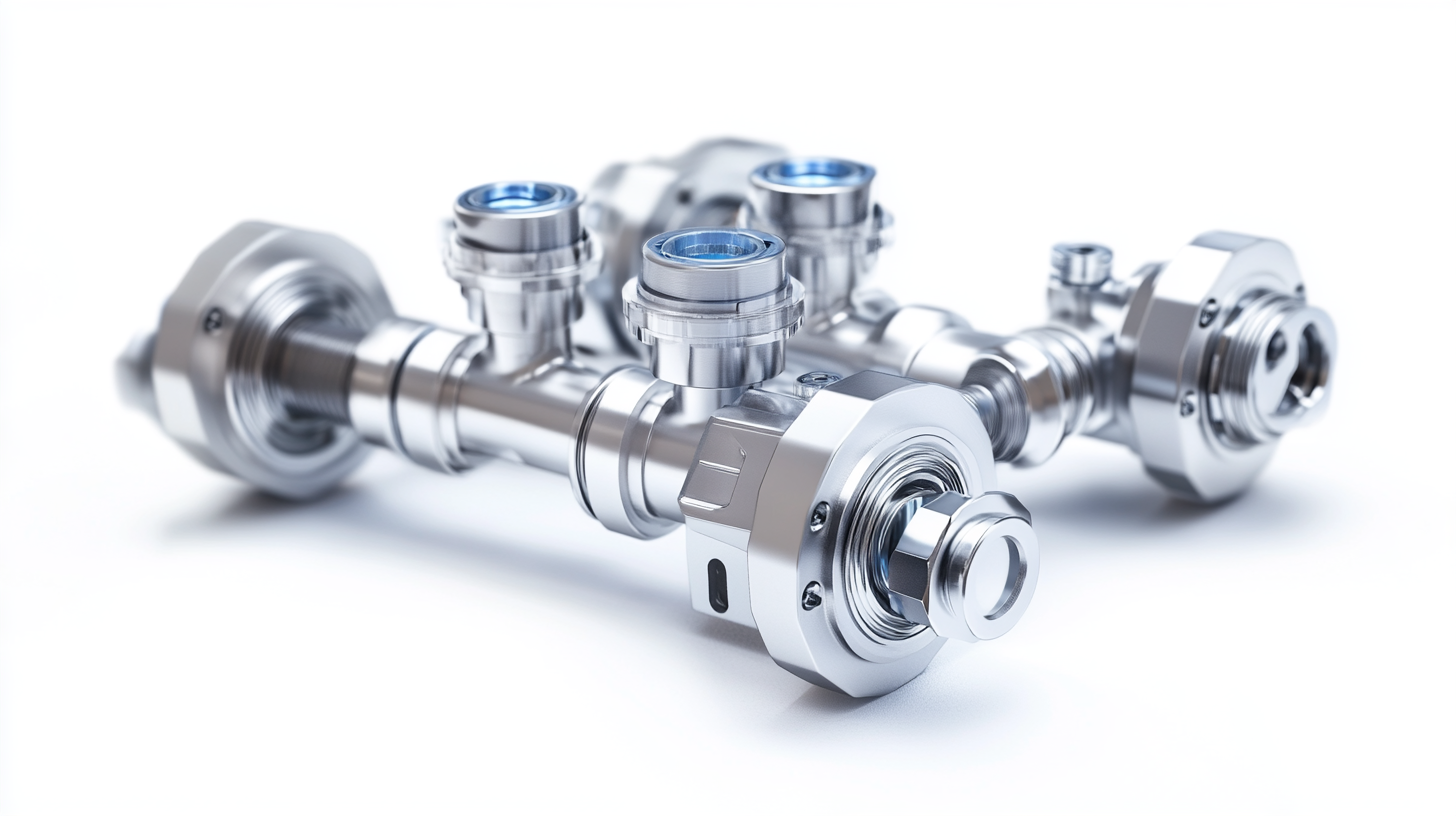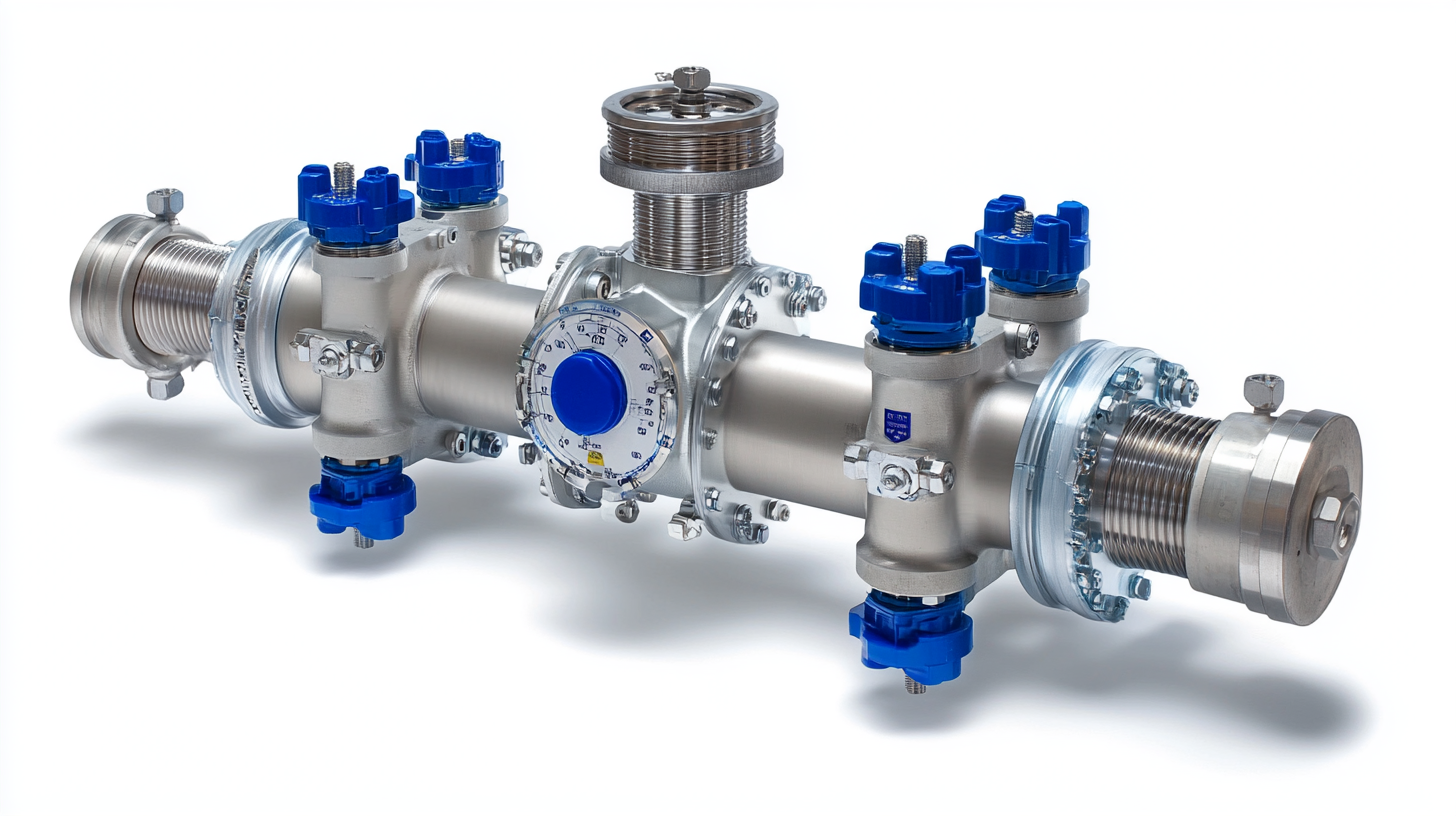The temperature mixing valve market is poised for significant transformations as we approach 2025, driven by evolving consumer demands, technological advancements, and regulatory influences. Temperature mixing valves, essential for ensuring the safe and efficient delivery of hot water in residential, commercial, and industrial settings, are becoming increasingly critical amidst rising concerns over energy conservation and water safety. Market players are navigating these changes by innovating their product offerings and enhancing system efficiencies, positioning themselves for growth in an ever-competitive landscape.
As we delve into the trends and projections surrounding the temperature mixing valve market, it is imperative to examine the key drivers shaping this sector. From the burgeoning emphasis on sustainable practices to the integration of smart technologies in HVAC solutions, the market is witnessing a paradigm shift that calls for agility and adaptability among manufacturers. This blog aims to provide a comprehensive overview of the current trends influencing the market, alongside projections for the future, offering insights that will be vital for stakeholders navigating this dynamic environment.

The temperature mixing valve market is witnessing significant growth driven by several key factors. Notably, the increasing demand for energy-efficient solutions in residential and industrial applications is propelling the adoption of these valves. According to a recent market report, the global temperature mixing valve market is projected to reach approximately $1.5 billion by 2025, growing at a CAGR of over 6% from 2020. This growth can be attributed to the rising awareness of energy conservation and the need for consistent temperature control in various processes. One of the pivotal trends fueling this market expansion is the introduction of feature-packed digital mixing valves. These advanced valves offer enhanced precision and control by utilizing smart technology for real-time monitoring and adjustments. A report by Frost & Sullivan notes that the integration of IoT technology in temperature mixing valves is set to revolutionize the industry, allowing for improved performance and operational efficiency. This digital transformation not only meets the evolving demands of consumers but also aligns with the global shift towards automation and smart infrastructures. Moreover, stringent regulations aimed at reducing energy consumption and enhancing safety standards in building management systems are further catalyzing the need for modernized mixing solutions. The U.S. Department of Energy has emphasized the importance of efficient plumbing fixtures, asserting that adopting high-performance temperature mixing valves can lead to significant reductions in energy and water usage. As the market progresses, manufacturers will continue to innovate, focusing on sustainability while addressing the diverse needs of both the residential and commercial sectors.

The temperature mixing valve market is experiencing transformative changes driven by emerging technologies that influence design and functionality. One of the most significant innovations is the integration of smart technology and IoT capabilities, which enable real-time monitoring and control of temperature settings. These advancements ensure that systems operate efficiently, leading to energy savings and enhanced safety for users. With the ability to adjust automatically based on external conditions, these smart mixing valves offer unprecedented precision in managing water temperatures in various applications, from residential to industrial settings.
Another fascinating development in this sector is the use of advanced materials and coatings that improve corrosion resistance and thermal stability. These innovations extend the lifespan of temperature mixing valves, making them more reliable and reducing maintenance costs for end-users. Additionally, manufacturers are increasingly focusing on sustainability by employing eco-friendly materials and production methods. As the demand for greener solutions rises, companies are finding that not only do these practices benefit the environment, but they also appeal to a growing consumer base that prioritizes sustainable practices.
As we look toward 2025, the emphasis on automation and efficiency will shape the future of the temperature mixing valve market. This will likely include the rise of AI-driven systems that can analyze usage patterns and make real-time adjustments, further enhancing performance and energy conservation. Manufacturers who invest in these emerging technologies will set the stage for innovations that not only meet regulatory standards but also exceed customer expectations, leading to a more sophisticated and responsive market landscape.

The temperature mixing valve market is poised for significant growth as global demand for efficient temperature control systems increases. Key opportunities are arising across different regions, driven by the growing emphasis on energy conservation and the rising adoption of smart building technologies. In this context, developing regions are particularly noteworthy, as they present a vast potential for manufacturers to expand their market presence and cater to the increasing consumer demand for modern heating and cooling solutions.
However, the market is not without its challenges. Regulatory hurdles and compliance requirements can vary significantly across regions, which may impede the seamless introduction of new products. Additionally, fluctuations in raw material prices pose a threat to profitability, compelling companies to innovate continuously while maintaining cost-efficiency. Understanding regional market dynamics, including consumer preferences and local competition, will be crucial for industry players looking to navigate these complexities successfully.
Emerging technologies play a pivotal role in shaping market trends. Innovations such as IoT-enabled mixing valves can enhance user experience by allowing for remote monitoring and control. Regions that prioritize technological integration are likely to see a quicker uptake of these advancements, further intensifying competition. By leveraging technology while addressing regional challenges, companies can position themselves strategically within this evolving landscape.

The temperature mixing valve market is poised for significant transformation as we approach 2025, driven by advancements in technology and increasing awareness of energy efficiency. Industry experts predict a shift towards smart mixing valves equipped with IoT capabilities, enabling real-time temperature monitoring and automated adjustments. This trend is not only set to enhance consumer convenience but will also optimize energy consumption, aligning with global sustainability goals.
Additionally, growing demand in residential and commercial sectors will propel market growth. As governments worldwide prioritize energy-saving measures, the integration of temperature mixing valves in plumbing systems will become more prevalent. Industries such as healthcare and hospitality are particularly expected to adopt these solutions to ensure safety and comfort, leading to a broader acceptance and reliance on advanced temperature regulation systems.
Furthermore, as regulatory frameworks become stricter regarding water safety and energy use, manufacturers will likely innovate to create valves that comply with new standards. The emphasis on durable materials and efficient designs will drive competition within the market, compelling companies to refine their product offerings. Stakeholders should anticipate a dynamic marketplace by 2025, characterized by increased investment in R&D and a focus on consumer-oriented solutions that meet emerging needs.
The landscape of the temperature mixing valve market is undergoing significant transformation, primarily driven by recent regulatory changes that are shaping industry dynamics. According to a report published by Grand View Research, the global temperature mixing valve market is anticipated to reach USD 3.2 billion by 2025, growing at a compound annual growth rate (CAGR) of 5.8% from 2019. This growth trajectory is significantly influenced by stringent regulations aimed at improving energy efficiency and reducing hot water scalding incidents.
Governments worldwide are progressively implementing regulations that mandate the use of temperature mixing valves in residential and commercial applications. For instance, the U.S. Department of Energy (DOE) has introduced new energy conservation standards that necessitate advanced technologies in plumbing systems. This regulatory pressure not only enhances safety standards but also encourages the integration of smart mixing valves that offer better temperature control and energy savings. As per a report by MarketsandMarkets, the smart valve segment is projected to register the highest growth rate, indicating a shift towards automation in temperature control systems.
The impact of these regulatory changes can also be seen in the increased demand for compliance and reporting among manufacturers. Companies are now required to adopt innovative solutions that align with environmental standards while catering to consumer safety. Research from Technavio further highlights that innovators in the industry who focus on compliance-driven product development are likely to capture a significant market share, ultimately reshaping the competitive landscape of the temperature mixing valve sector by 2025.
